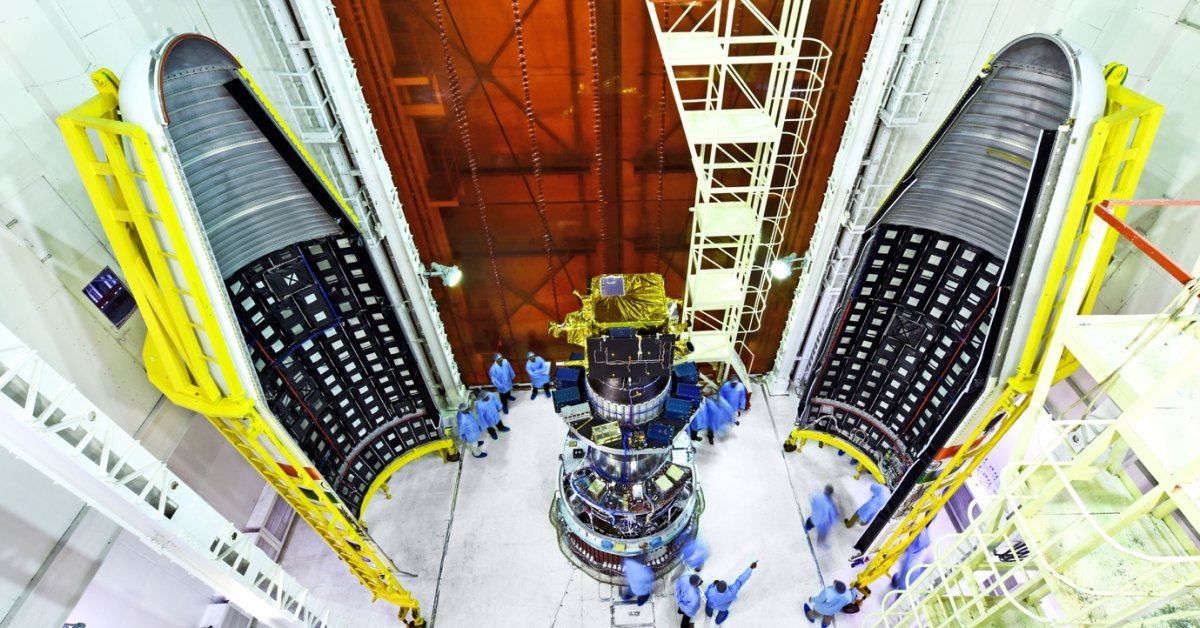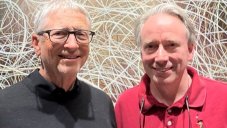ISRO To Successfully Launch HysIS Earth Imaging Satellite
Shakti - Dec 24, 2018

The HysIS Earth Imaging Satellite and 30 co-passenger satellites are launched with ope for monitoring climate change and other Earth studies
- SpaceX Beats ISRO By Launching The Most Satellites In A Vehicle, 143
- China Attacked Indian Satellite Systems Several Times In The Last Decade
- IISc & ISRO Scientists Develop Space Bricks For Habitation On The Moon
Indian Space Research Organization (ISRO) has successfully launched its workhorse rocket called the Polar Satellite Launch Vehicle carrying India’s earth observation satellite HysIS along with 30 co-passenger satellites from 8 countries on November 29 from the Satish Dhawan Space Centre SHAR in Sriharikota.
The PSLV-C43 containing HysIS satellite before launching
The trusted rocket model PSLV-C43 was launched at the first launch pad (FLP) after a 28-hour countdown at 5.58 AM. The exemplary liftoff took 2 hours to separate from the mission. The mission PSLV-C43 is a core-alone version of the PSLV so it was launched without the 6 straps configuration, called the “XL” configuration. This is the lightest version of the launch vehicle and the 45th flight of India’s PSLV program. If it is successfully implemented, this will be the 13th successful launch of the model in this configuration.
The main payload is the Hyperspectral Imaging Satellite HysIS, which is an earth observation (EO) satellite. This was placed in the 636km- polar sun-synchronous orbit.
For every stage, the rocket applied alternating liquid and solid propellants. Around 1000 seconds after the takeoff, the 4th-stage engine was disconnected. HysIS was separated at this moment when the rocket reached the altitude of about 640km. After over 6000 seconds into the flight, the very first co-passenger satellite started separating. For the next 200 seconds, the rest satellites separated. During the flight, the rocket reached the highest inertial velocity of 7609 meters per second.
The HysIS Satellite
The multispectral satellite will observe the earth through 2 imaging instruments in the VNIR and SWIR portions, respectively short for Visible Near Infrared and Shortwave Infrared. This VNIR sensor was produced by the ISRO itself due to the fact that those sensors from foreign customer didn’t meet the space agency’s requirements upon the pixel size, the charge handling capacity and the signal towards noise ratio. Charge Coupled Device (CCD) was developed for the VNIR sensor 4 by the Semi-Conductor Limited (SCL) from Chandigarh and the Space Applications Centre (SAC).
The HysIS image before the launch
Two solar panels folding out in the space are used to power the HysIS. 730W of power is required to run the instruments through a 64 Ah Lithium-ion battery. These instruments have a spatial resolution of 30 meters and swath of 30 km from its 636 km sun-synchronous orbit. This 380kg HysIS employs the modifies IMS-2 bus and will provide planet coverage, supplementing for existing imaging satellites. Results from HysIS are hoped to be applied in different areas such as forestry, agriculture, geology, inland waters, and coastal zones as well. HysIS already has a plan of mission for five years from now.
The 30 co-passenger satellites
HysIS and other 30 satellites
The 30 secondary payloads consist of 1 micro and 29 nanosatellites which used for EO or Internet of Things (IoT) purposes. The Canadian Kepler, the Australian Cantauri, the American HSAT-1, and the Dutch HIUBER-2 are used for remote IoT purposes. The Malaysian InnoSAT-2, the American CICERO 8 and Global-1, the Finnish Reaktor Hello World and the Colombian FACSAT are used for EO purposes. The 3Cat-1 is meant to test the behavior of different technologies in the harsh space environment. 3Cat-1 consists of a wireless charger, a graphene transistor, a camera, and experimental solar panels.
The Planet Labs from the US also sent 16 satellites for earth observation. These “Dove” satellites come from the Flock-3r, which is a Planet Labs earth imaging constellation. 88 Dove satellites, all part of Flock-3P, were launched by the PSLV-C37 rocket. The 3Cat-1 is an academic spacecraft from the Universidad Politecnica de Cataluna in Spain.
These satellites took up 261.5 kg and were deployed at 504 km. All contracted to send these satellites along with the primary payload were signed through the Antrix Corporation, ISRO commercial wing.
Featured Stories

ICT News - Dec 25, 2025
The Visibility Concentration Effect: Why Half the Web Isn’t Qualified Anymore

ICT News - Jul 05, 2025
Windows 11 is Now the Most Popular Desktop OS in the World

ICT News - Jul 02, 2025
All About Florida’s Alligator Alcatraz: A Smart Move for Immigration Control

ICT News - Jun 25, 2025
AI Intimidation Tactics: CEOs Turn Flawed Technology Into Employee Fear Machine

ICT News - Jun 24, 2025
Tesla Robotaxi Finally Hits the Streets: $4.20 Rides That'll Make You Hold Your...

ICT News - Jun 24, 2025
World's First Flying Humanoid Robot Takes Flight

ICT News - Jun 24, 2025
When Closed Source Met Open Source: Bill Gates Finally Meets Linus Torvalds After...

Gadgets - Jun 23, 2025
COLORFUL SMART 900 AI Mini PC: Compact Power for Content Creation

ICT News - Jun 22, 2025
Neuralink Telepathy Chip Enables Quadriplegic Rob Greiner to Control Games with...

ICT News - Jun 20, 2025



Comments
Sort by Newest | Popular